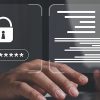Understanding Caller ID
Caller ID refers to the name and number that appear on your phone when you receive a call. It is also what’s shown when you call someone else. However, it’s important to differentiate between contacts saved in your phone and unidentified numbers. This discussion focuses specifically on what you see when receiving calls from unknown numbers or when you contact someone who hasn’t saved your information.
While caller ID is traditionally more prevalent on landline phones, it is also becoming more common on mobile devices. Although it may not always function perfectly on cell phones, it does provide a helpful indication of who is calling.
That said, caller ID can sometimes be misleading. Both businesses and individuals can use technologies to alter their caller ID, making them appear as different numbers.
How Does Caller ID Work?
-
The Call Is Made: When a call is initiated, the caller’s phone sends their number to the recipient’s phone provider using Caller Line Identification (CLID).
-
The Provider Searches its Database: Most phone companies have access to their own data but also refer to Caller ID Name (CNAM) databases to identify the caller.
- Caller ID Displays: If the caller’s number matches a record in the database, that information is prominently displayed on your phone.
This process relies on extensive databases of names and numbers, which are often outdated or inaccurate. Furthermore, CNAM databases vary across the U.S. and globally and are managed by different organizations. As a result, it’s possible to see incorrect names displayed on your device.
Nonetheless, caller ID is an effective tool for getting a heads-up on who is calling, allowing you to decide how to answer or whether to screen the call.
Finding Caller ID on Your Device
Modern landline phones typically feature a display that automatically shows caller information. Usually, this feature is enabled by default, requiring no additional setup.
To check what your caller ID looks like to others, simply place a call to another phone.
If you wish to modify your caller ID information, many service providers allow edits through your account settings. You can also reach out to customer service for assistance. Keep in mind, though, that updating your caller ID may take time to reflect across all databases, meaning some contacts may still see your old info.
For businesses, a reliable caller ID is vital. It builds trust with customers, encouraging them to answer calls. Additionally, companies can integrate their customer relationship management (CRM) systems with their phone networks, providing valuable context during calls, such as previous interactions and purchase history.
What to Do When Caller ID Shows Unknown Numbers
If caller ID fails and only a mystery number appears, you can perform a reverse phone lookup using websites like BeenVerified or Whitepages. A simple online search can yield results, especially if the number is linked to spam or a visible business.
To proactively identify unknown callers and block unwelcome calls, consider using applications like TrueCaller, which maintains its own database of suspicious numbers and offers features like call screening and blocking.
The Complexity of Spoofed Caller ID
While we’ve established that caller ID has its flaws—especially concerning spoofing—there are legitimate reasons for this practice. For example, law enforcement may need to mask numbers for undercover operations or witness protection. Businesses may also use it for legitimate purposes, such as displaying toll-free numbers or ensuring customer privacy in the healthcare sector by revealing a central office contact rather than an individual’s direct line.
Despite its useful applications, spoofing can also be abused. The Truth in Caller ID Act of 2009 exists to prohibit deceptive practices. However, many continue to use spoofing for illegal activities, including:
- Telemarketing Scams: Impersonating reputable companies to gain personal information.
- Phishing Attacks: Luring individuals into divulging information by posing as trusted institutions.
- Extortion and Harassment: Making anonymous threats to intimidate victims.
- Identity Theft: Accessing sensitive personal information by masquerading as others.
You may encounter scenarios such as fraudsters pretending to be a family member in distress asking for urgent financial help, or demands for payment for non-existent purchases. Be wary and verify the identity of callers before proceeding.
*Maintaining Your Privacy: Using 67**
While you can’t control how others use spoofing, you can protect your privacy when making calls. Dialing *67 before the number ensures your information remains hidden, causing the recipient to see “Private,” “Blocked,” or “Unknown.”
Keep in mind, this isn’t entirely foolproof, as some systems may not honor the blocking code. However, if you receive a call from a blocked number, law enforcement can trace it via the caller’s IP address if necessary.
While *67 is a useful first step for occasional privacy needs, utilizing advanced call-blocking applications with masking capabilities or opting for a VoIP service offers even better control over what others see when you call.






